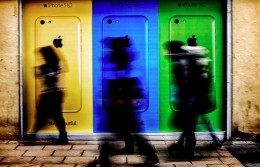How Planned Obsolescence Encourages You to Buy New Things

At first, I thought it was my imagination. Around the time the iPhone 5S and 5C were released, in September, I noticed that my sad old iPhone 4 was becoming a lot more sluggish. The battery was starting to run down much faster, too. But the same thing seemed to be happening to a lot of people who, like me, swear by their Apple products. When I called tech analysts, they said that the new operating system (iOS 7) being pushed out to existing users was making older models unbearably slow. Apple phone batteries, which have a finite number of charges in them to begin with, were drained by the new software. So I could pay Apple $79 to replace the battery, or perhaps spend 20 bucks more for an iPhone 5C. It seemed like Apple was sending me a not-so-subtle message to upgrade.
In this weekend’s NYT Magazine’s economics column, Catherine Rampell examines “planned obsolescence,” which essentially means giving products a limited life span so that consumers will be encouraged to spend money to replace them, or to upgrade when new lines of products come out. Rampell uses her iPhone 4 as an example, which she says suspiciously wore down just as Apple released their latest lines of iPhones.
I went from a flip phone to an iPhone 4S a few years ago, and I’m not planning on replacing my phone until it’s damaged or ceases to work. With planned obsolescence, maybe my phone will start degrading the next time a new line of phones come out.
Photo: Tony Eccles
Support The Billfold
The Billfold continues to exist thanks to support from our readers. Help us continue to do our work by making a monthly pledge on Patreon or a one-time-only contribution through PayPal.
Comments